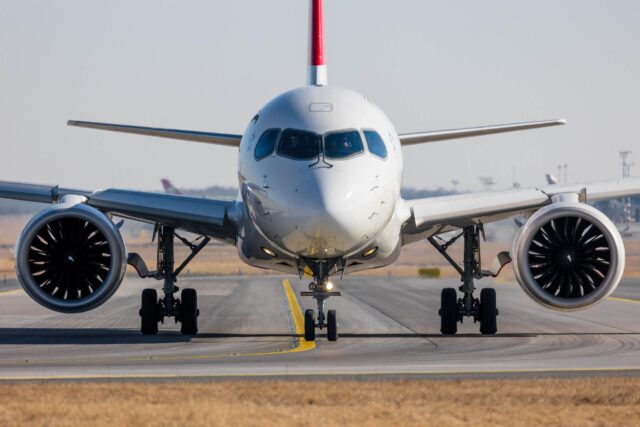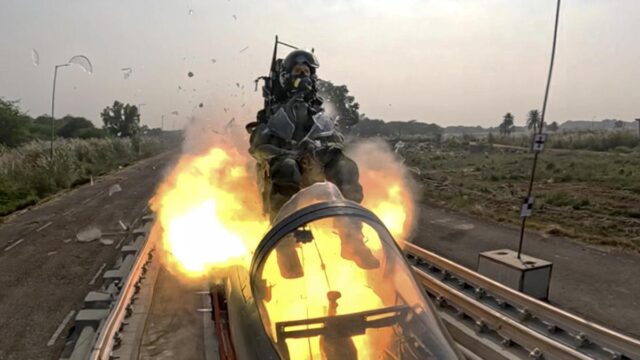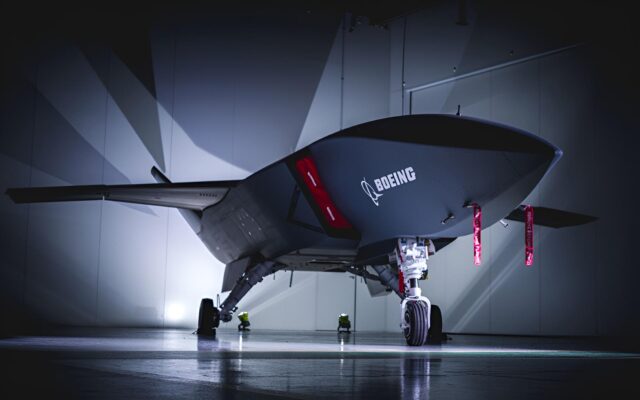UK Royal Navy declares 2 drone platforms ready for service, including Peregrine mini helicopter

September 11, 2025

The Royal Navy has declared two uncrewed aerial platforms ready for front-line operations, marking a significant step in its drive to integrate autonomous systems into maritime aviation.
The Peregrine rotary-wing drone and the Malloy T-150 logistics UAV are now in service, both designed to expand the Fleet’s reach and resilience.
“The UK Commando Force continues to be at the vanguard of operational change in embedding digital and autonomous systems into the way we fight,” says Brigadier Chris Haw, Head of the Commando Forces Programme.
Peregrine mini helicopter drone to bring eyes and ears to the Royal Navy
Developed by Thales in partnership with Schiebel, Peregrine is a rotary-wing uncrewed air system (RWUAS) that extends the “eyes and ears” of the Fleet well beyond the horizon. Equipped with Thales’ I-Master radar, it delivers day-and-night, all-weather intelligence, surveillance and reconnaissance (ISR) across complex maritime and littoral environments.
The Royal Navy confirmed Peregrine has already proven itself on live operations with HMS Lancaster, supporting maritime security missions and counter-narcotics patrols. Its agility and persistence have shown the value of uncrewed helicopters for enhancing situational awareness in contested seas.

“The introduction of Peregrine into service is a game-changer for our surface fleet,” says Captain Dave Gillett, Head of Navy Develop’s Maritime Aviation & Carrier Strike. “Its successful deployment with HMS Lancaster shows how uncrewed systems can deliver real operational advantage, extending our surveillance reach and enhancing our decision-making in theatre.
Thales described the in-service declaration as a milestone. “Its operational success aboard HMS Lancaster demonstrates the potential of rotary wing uncrewed air systems to transform maritime operations,” says Marie Gayrel, Vice-President for ISR activities at Thales. “This milestone highlights our shared commitment to innovation, safety and delivering critical capability to the Fleet.”

Crucially, Peregrine is positioned as a core element of the Royal Navy’s Maritime Aviation Transformation Strategy, which is bringing in both crewed and uncrewed systems to sustain operational advantage.
Malloy T-150 heavy lift quadcopter for resupply at sea
Alongside Peregrine, the Navy has also declared the Malloy T-150 in service. This heavy-lift quadcopter drone has already been trialled in ship-to-shore resupply and amphibious support roles. Capable of carrying payloads of up to 68kg, it allows commanders to move supplies and critical equipment without exposing sailors to unnecessary risk.

“The introduction of logistic drones represents a significant expansion in the Commando Force’s use of Uncrewed Aerial Systems, beyond those already in service for surveillance/reconnaissance, and importantly reduces the risk to personnel during tactical resupply,” says Brigadier Haw.
“Tested in operationally representative conditions, and developed in close collaboration with Malloy, the equipment and operators have made considerable progress. The T-150 has great potential for broader use-cases as we have recently seen in operational theatres and on the Carrier Strike deployment.”
The Malloy T-150 is also undergoing operational evaluation with the UK Carrier Strike Group in the Indo-Pacific, recently delivering supplies from aircraft carrier HMS Prince of Wales to destroyer HMS Dauntless in a historic first.

Together, Peregrine and the T-150 reflect the Navy’s broader ambition to integrate autonomy across the Fleet. Both platforms have moved rapidly from trials to operational service, signalling the urgency with which the UK is modernising its maritime aviation.
















